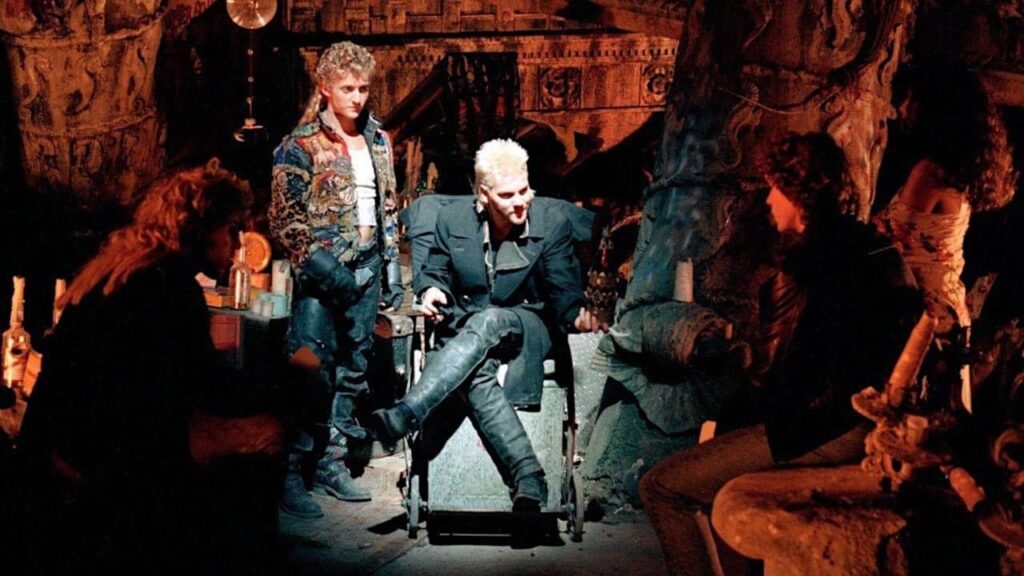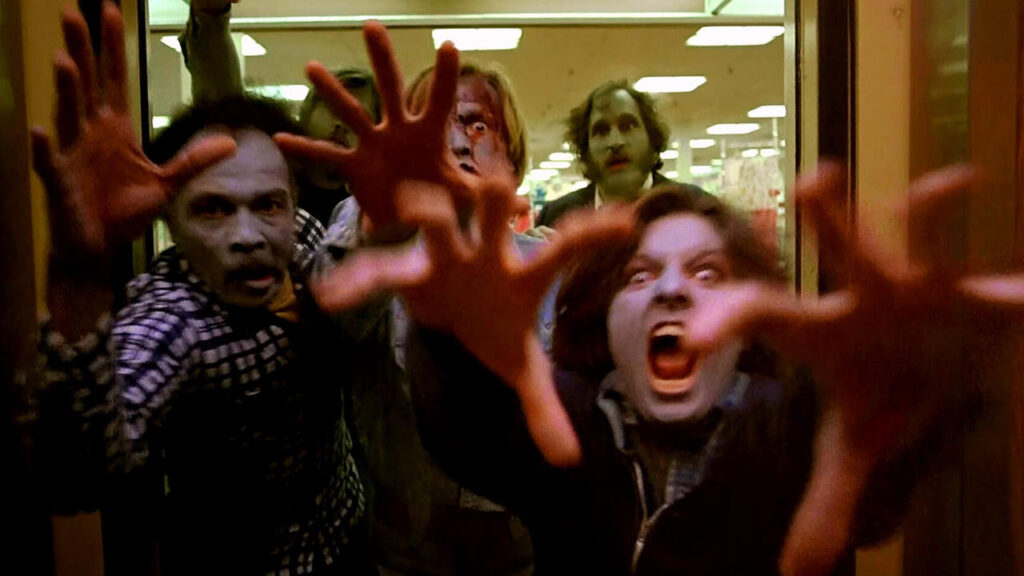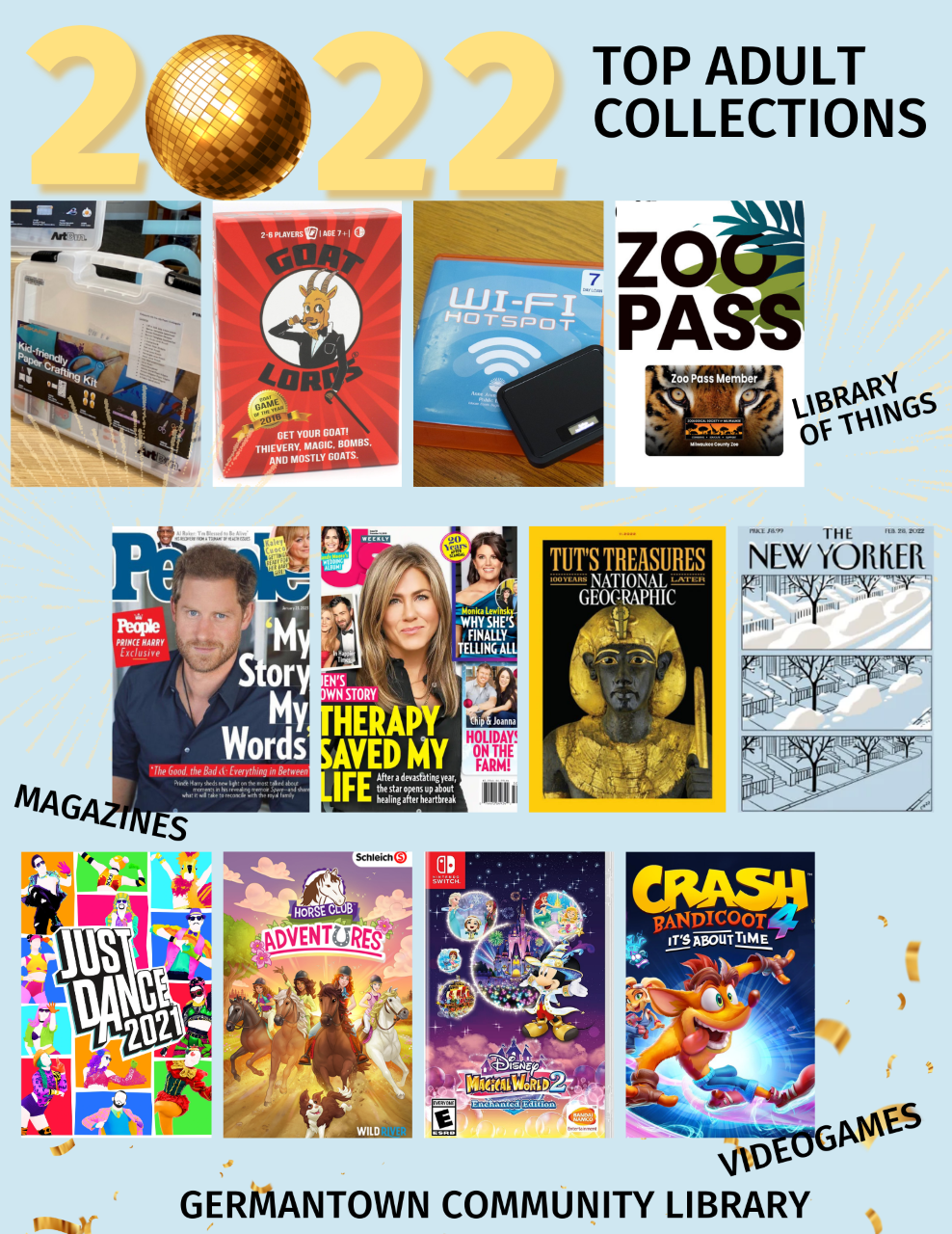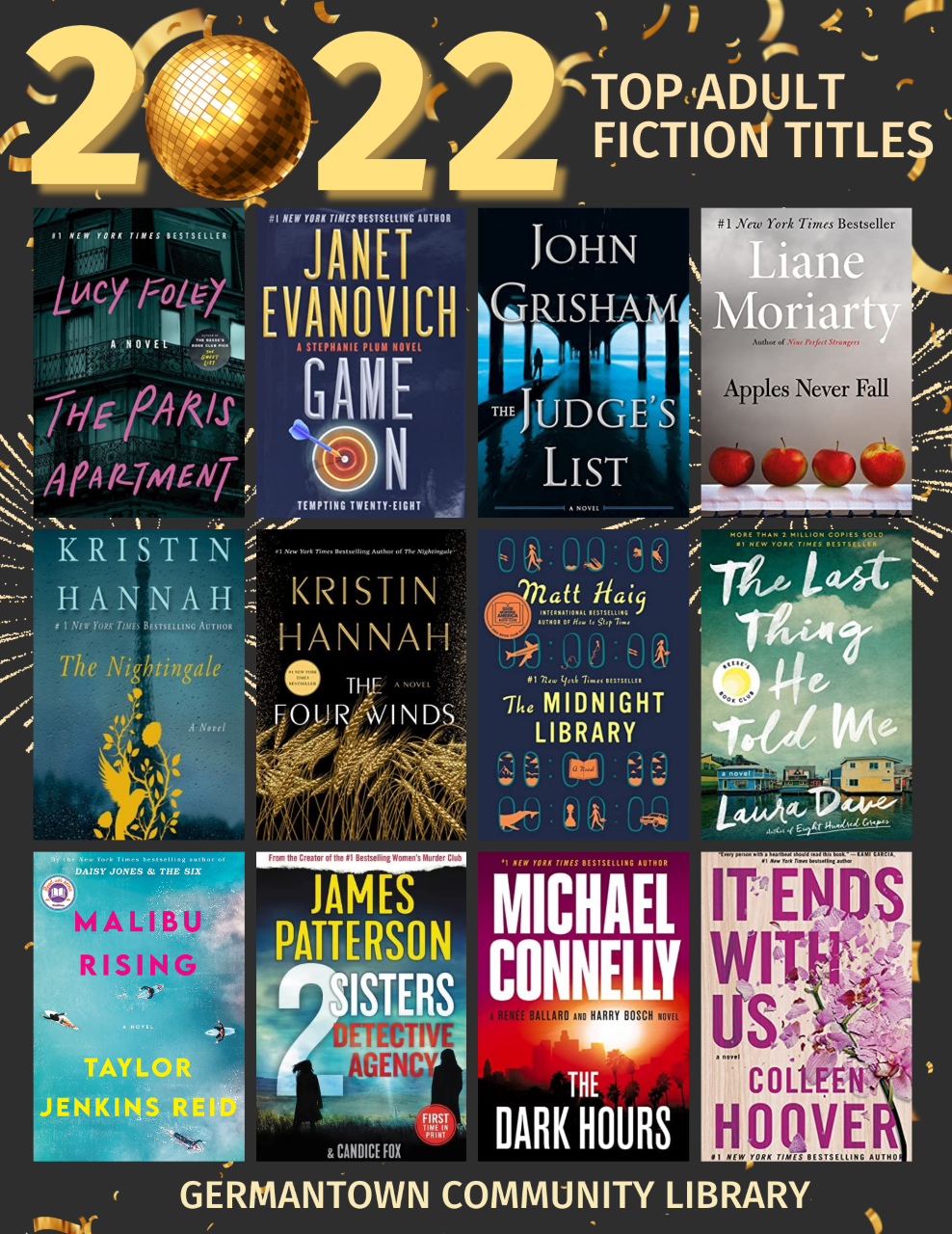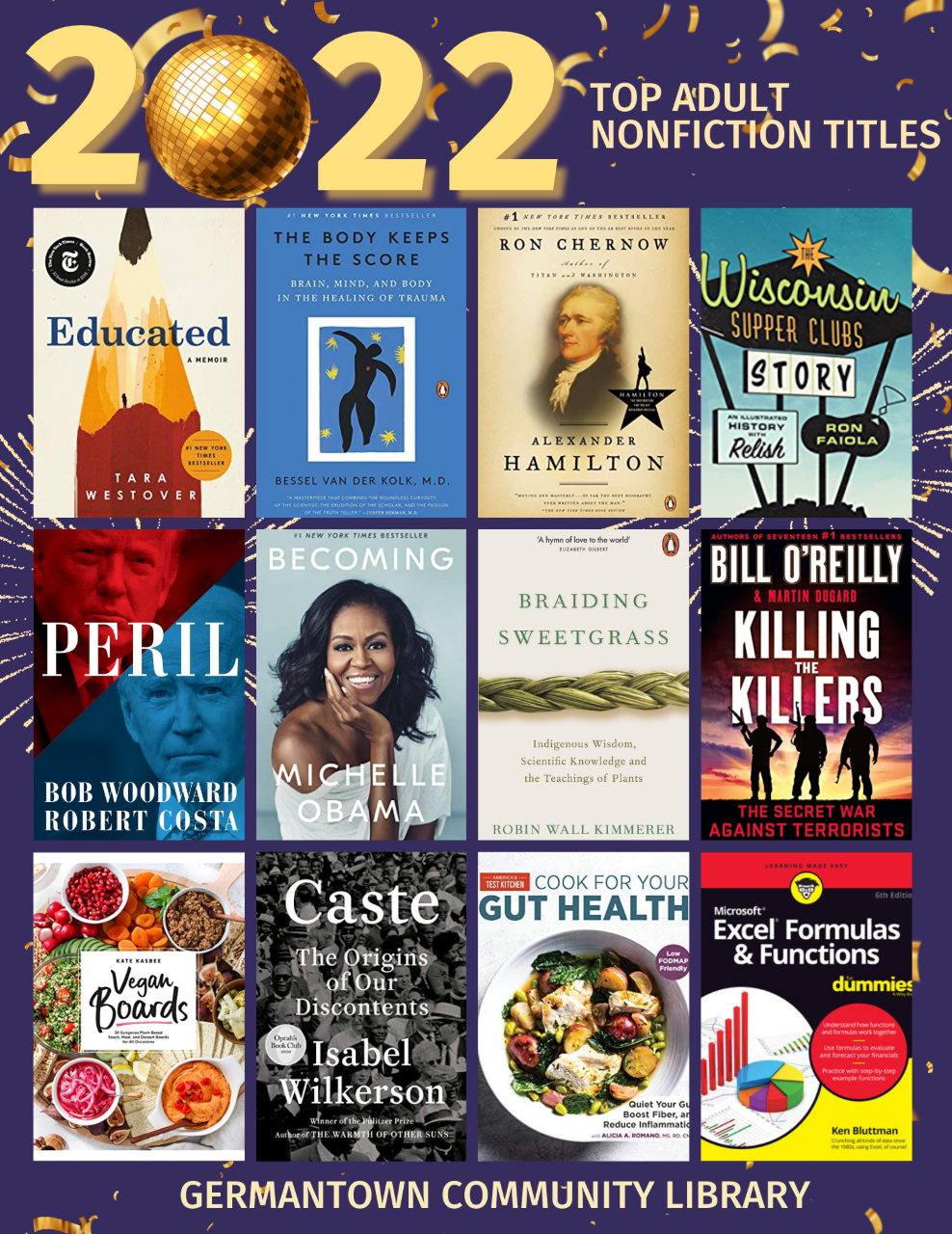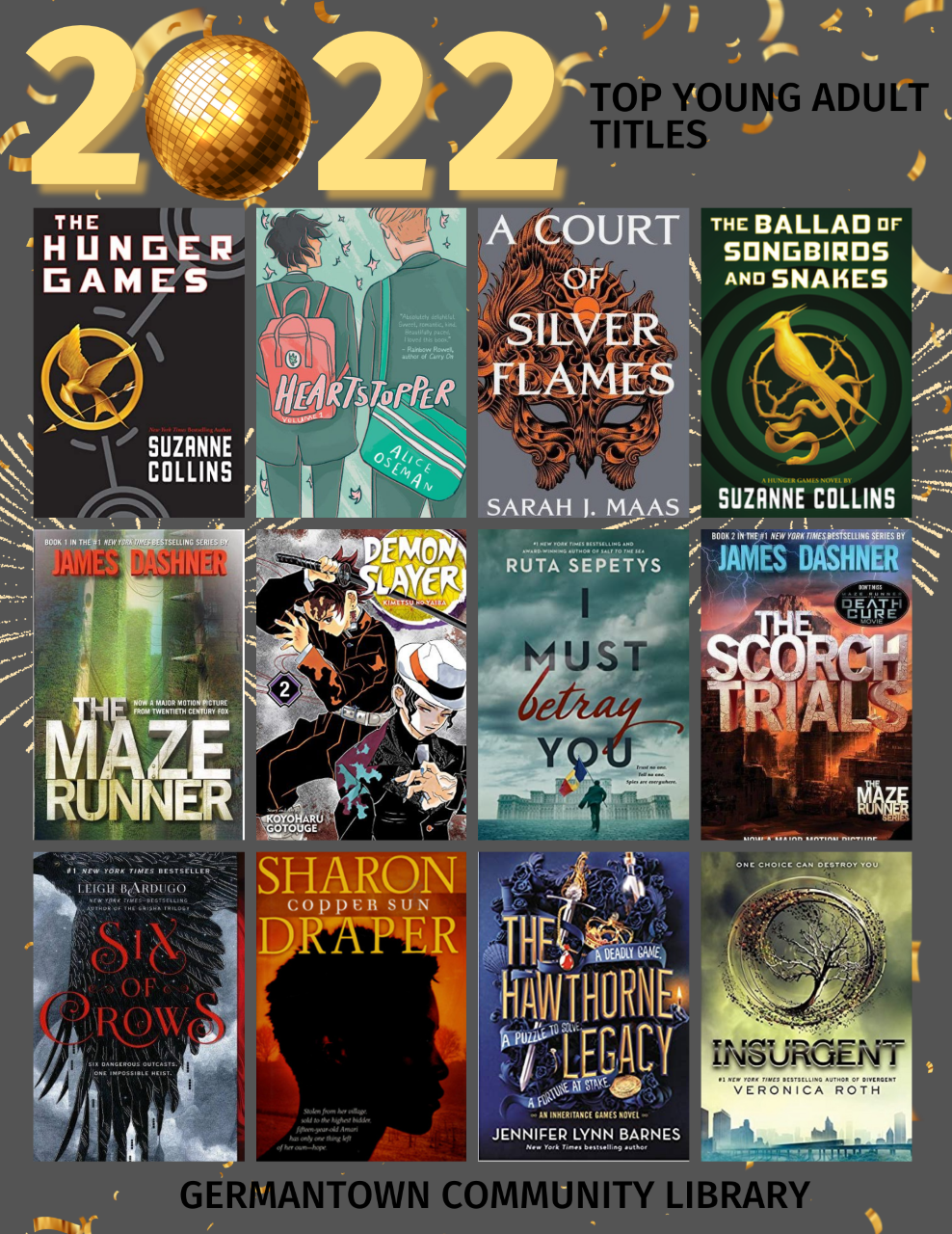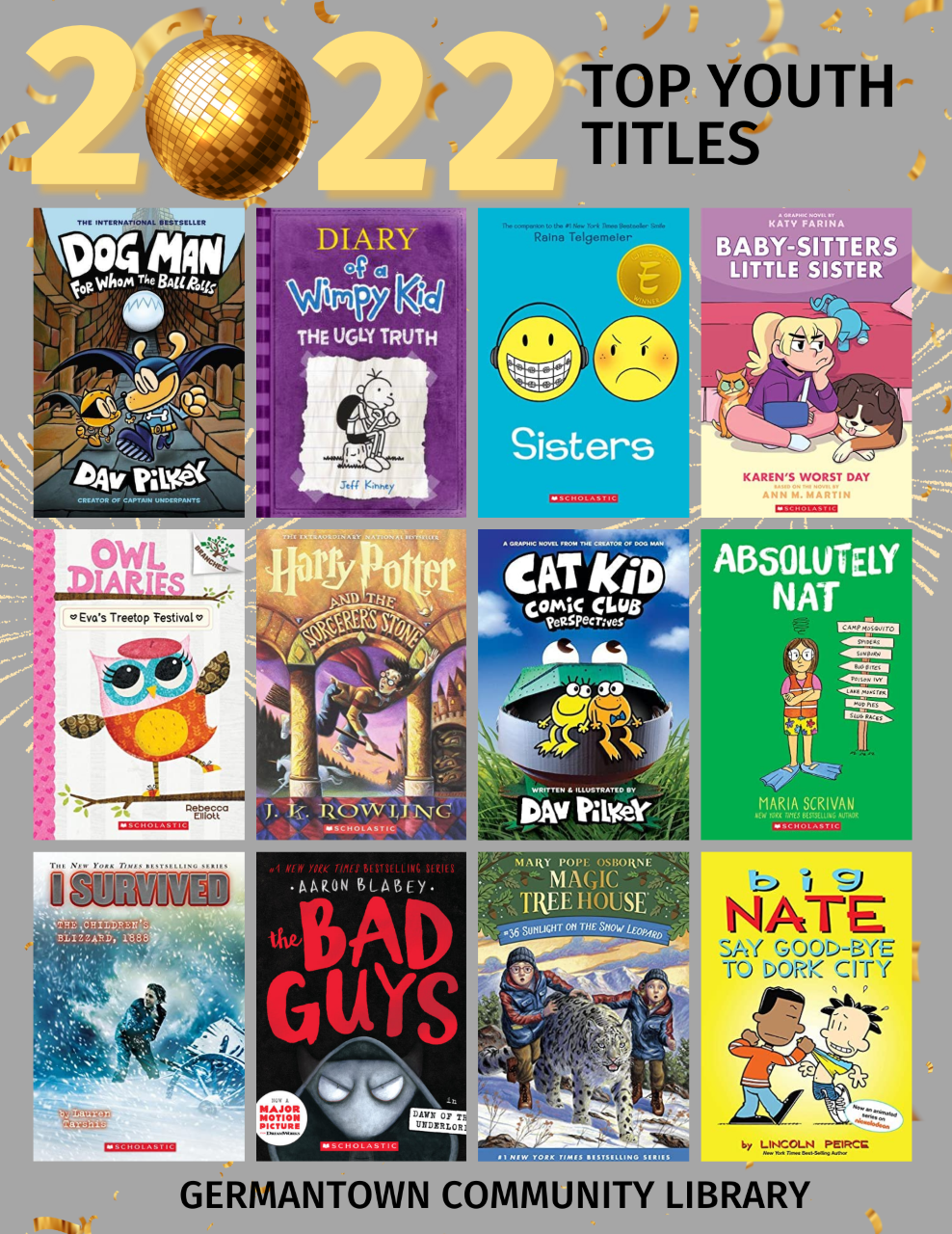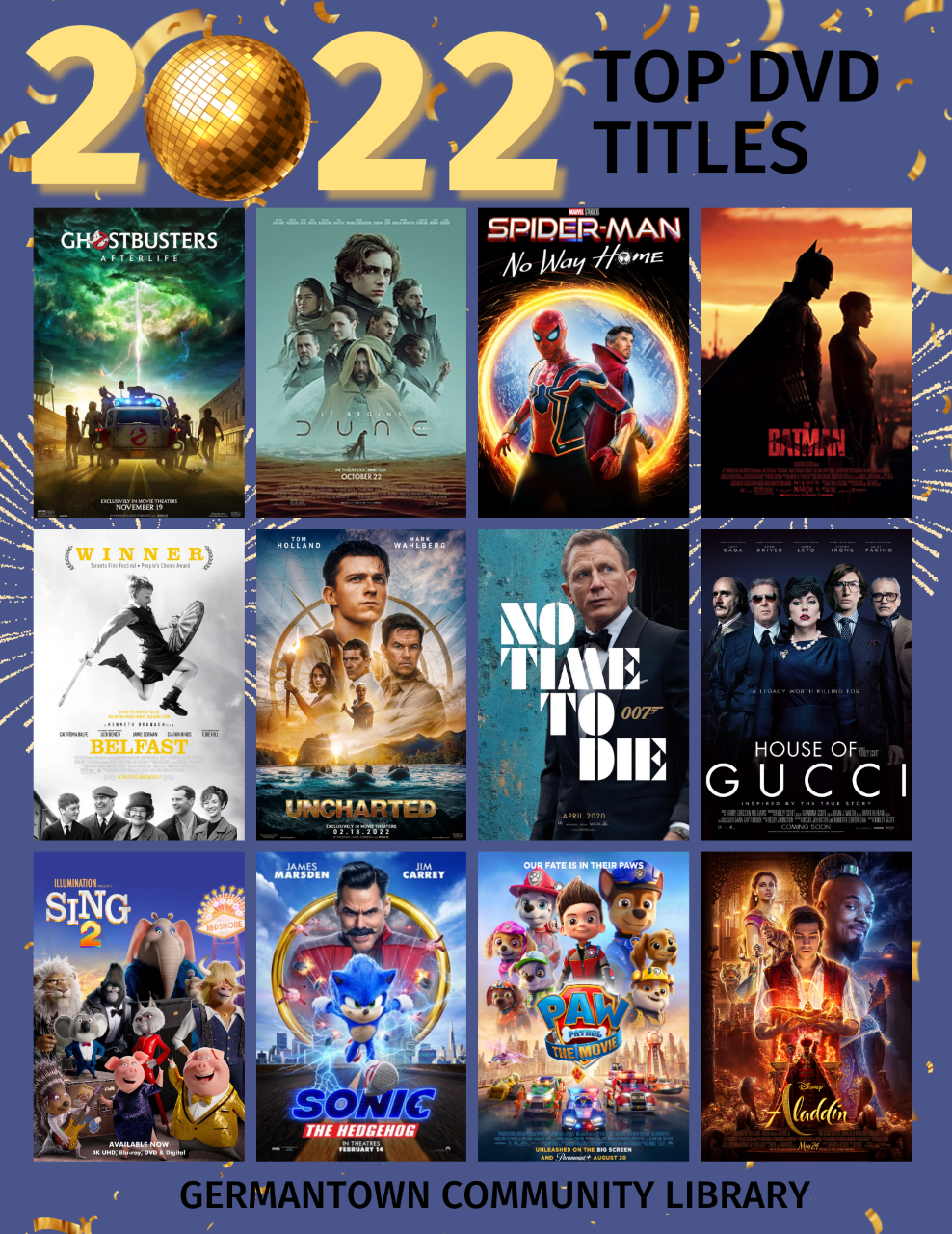The Germantown Community Library staff read some terrific books in 2023, and we want to share our favorites with you. Not everything on this list was published in 2023 – there’s always something we’ve been meaning to read for ages and finally got around to (sound familiar?).
And just like you, sometimes we put the book down to watch or listen to something, so we’ve
included those favorites as well.
When you’re looking for ideas, don’t forget to peruse the Friends of the Germantown
Community Library book sale! Some of the most interesting things I’ve read were found on
their shelves; things I didn’t know existed and would never have found otherwise.
We hope our recommendations will give you a good start to 2024!
Read It: Fiction Includes Adult and Young Adult titles
The Canary Girls by Jennifer Chiaverini (2023, Historical Fiction)
Canary Girls provides a glimpse of the diverse British women that
supported the WWI effort building ammunition and how it impacted their families and the country.
“If you enjoy learning about history through historical fiction material,
CONNIE, ASSISTANT DIRECTOR
you’ll love this book.”

The Cheat Sheet by Sarah Adams (2022)

“Wholesome, adorable, funny romance.”
Emily, Circulation
Dear Edward by Ann Napolitano (2020)
12-year old Edward is the only survivor of a plane crash. As time passes, Edward and
others affected by the crash learn how to find purpose and meaning again in their lives.
“A good pick for book club discussions.”
Lynn, Adult SERVICES

The Dictionary of Lost Words by Pip Williams (2021, Historical Fiction)

A young woman learns about the power of words as she navigates a man’s world during the first years that the Oxford English Dictionary was being written.
Esme had the courage to go beyond the expected, and with the help of other women,
Shari, Adult SERVICES
created her own small but nonetheless important dictionary.
Euphoria by Lily King (2014)
Set between the world wars and inspired by experiences from Margaret Mead’s life,
three young anthropologists are caught up in a struggle involving love and power that
has disastrous results.
“Vivid characters and a compelling storyline.”
lynn, adult SERVICES

A Gentleman in Moscow by Amor Towles. (2012, Historical Fiction)

Towles is a skillful writer overall and has a special ability to artfully describe food! It’s
rare to see words put together so beautifully!
“This book continues to win fans after more than a decade.”
Katie, Youth Services
Gideon the Ninth by Tamsyn Muir (2019, New Adult)
Gideon wants to escape the planet she crash landed on as a child, but the cruel necromantic ruler of the Ninth House won’t let her leave without one more deal. She must accompany Harrowhark to a life-threatening gothic horror mansion where everyone is competing for the same thing: immortality.
“Sci-fi, fantasy, and comedy come together horrifically, and I mean that in the best way possible.”
Shannon, Youth services

The Ghosts of Rose Hill by R.M. Romero (2022, Young Adult)

A story about Ilana, a teenage girl sent to an
aunt in Prague. While discovering the hidden, enchanted side of Prague through her
friendship with Benjamin, a ghost, she also discovers herself.
“A beautifully written “ghost story”.”
Jill p, Adult SERVICES
The Girl Who Fell Beneath the Sea by Axie Oh (2022, Young Adult)
An interesting take on Asian mythology and the afterlife.
“Fans of Spirited Away or The Ghost Bride will enjoy it”
Jackie, Youth Services

The Goldfinch by Donna Tartt. 2013
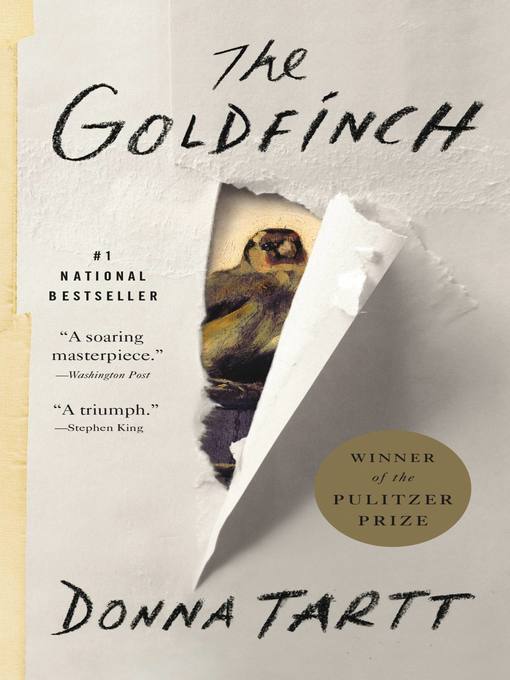
Centers on 13-year-old Theodore Decker, and the dramatic changes his life undergoes after he survives a terrorist attack at the Metropolitan Museum of Art that kills his mother and results in him coming into possession of Carel Fabritius’s painting “The Goldfinch.”
Recommended by Sue, Circulation
The Housemaid by Freida McFadden (2022)
A maid who isn’t who she appears to be finds herself working for a family with
secrets of its own.
“Full of suspenseful twists, this thriller is unputdownable!”
Barb, Circulation

House of Leaves by Mark Z. Danielewski (2000)

This book is about a man who finds a book manuscript about a movie that doesn’t exist about a house that might exist. Everyone goes insane. Including you.
The most unique reading experience I’ve ever had.
Shannon, Youth Services
I Must Betray You by Ruta Sepetys (2022)
In Romania 1989, a 17-year-old boy who wants to be a writer is recruited to spy on his neighbors.
An author recognized for giving voice to lesser known historical events, Ruta Sepetys is beloved by adult and young adult readers alike.
jill n, Youth services

The Island by Adrian McKinty

A desperate stepmother struggles to save her new family from a gang of vindictive locals seeking revenge.
An unputdownable thriller.
Jenny, circulation
The Kindred Spirits Supper Club by Amy Reichert. 2021
Supper club + paranormal + romance = a lovely lighthearted read set in the Wisconsin
Emily, circulation
Dells.

The Last House on Needless Street by Catriona Ward. 2021

This is the story of a serial killer. A stolen child. Revenge. Death. And an
ordinary house at the end of an ordinary street. All these things are true.
A story with a lot of surprising twists.
Sue, Circulation
The Last Flight by Julie Clark. 2020
Two women, both with secrets to keep, swap places in a desperate attempt to escape
their lives. A nail-biting thriller!
A nail-biting thriller!
Jenny, Circulation

Lessons in Chemistry by Bonnie Garmus (2022)

In the 1950s, a woman’s dream of being a scientist is challenged by a society that
says women belong only in the domestic sphere. She accepts a job on a TV
cooking show and sets out to teach a nation of overlooked housewives way more
than recipes.
Recommended by Sue and Amy from Circulation
The Librarian of Crooked Lane by C.J. Archer (2022)
A cozy murder mystery set in 1920’s London.
A little romance, a little magic and a little murder – what more could you want?
Jackie, Youth Services

Life’s Too Short by Abby Jimenez (2021)

“Heart-wrenching but sweet romance.”
Emily, Circulation
The Maid’s Diary by Loreth Anne White (2023)
I’ve enjoyed all the popular “Maid” titles (such as those by Freida McFadden
and Nita Prose) but this one is the best. Tight, suspenseful pacing, less violence.
I thought I was on to the red herrings, but I didn’t see the end coming!
Joanne, Circulation

Mascot by Charles Waters (2023)

Six middle school students learn about identity, tradition, and what it
means to stand up for change after getting an English assignment to debate whether the
schools mascot should stay or change.
Recommended by Jill N, Youth Services
The Match by Harlan Coben. 2022
Second in Coben’s Wilde series, in this novel Wilde may be closer to learning who he is
and why he was found as a child feral and alone in the mountains.
“Dramatic plot twists
Jenny, Circulation
and turns abound as the answers Wilde finds lead to more questions.”

No Two Persons by Erica Bauermeister. 2023

Although this book was essentially short stories, which I don’t normally love, they came together because each story had a connection with a particular book that was
meaningful in different ways to the various characters.
I really like her style of writing and have enjoyed all her other books as well.
AMY, cIRCULATION
The Quiet Tenant by Clemence Michallon (2023)
A well-respected man and his daughter live in small town. No one knows that he
has kidnapped and killed several women, and has one captive in a shed in his backyard. When he is forced to move, it leads to a strange connection between his daughter and his captive.
“I liked the interesting dynamic between the women.”
Diane, Circulation Manager

Remarkably Bright Creatures by Shelby van Pelt (2022)

Ordinary people gracefully navigating unusual situations including those with other species.
I will never eat octopus again.
Joanne, cirCulation
A heartwarming book; don’t miss it!
Barb, Circulation
The River We Remember by William Kent Krueger (2023)
While gathering to honor veterans, the discovery of a murdered man results in members of a small town finding themselves caught in a web of secrets. Anger and suspicions threaten violence as the sheriff races to find the killer.
Jill N, Youth Services

The Rom-Com Agenda by Jayne Denker. 2023

Wholesome and funny romance!
Emily, circulation
Ruth Galloway mystery series by Elly Griffiths (2009-present)
This series of 14 titles (so far) is interesting not only because of the interpersonal
relationships in the series, but also because the main character is an archaeologist and
uses that background to help solve mysteries.
Amy, Circulation

The Secret History by Donna Tartt (1992)

Defined characters help create a believable and flawed narrative that you can’t help but getting lost in.
Some of the best writing that I’ve ever encountered
Rory B, Circulation
Sleeping Beauties by Owen and Stephen King (2017)
Famed author Stephen King teams up with son Owen to create a doorstopper horror
novel with complex characters. A strange disease causes women who are disturbed
while sleeping become feral and violent. One woman appears to be immune, but the
men divide into factions seeking to save or destroy her.
Jenny, Tech Services

The Switch by Beth O’Leary. 2020

Grandmother and granddaughter need a break, so they switch lives – and learn all sorts of things about themselves in the process.
Sweet and funny, with some wholesome
Emily, Circulation
romance in there too.
Thornhedge by T. Kingfisher (2023)
How do you turn the Sleeping Beauty fairy tale inside out?
Thornhedge
Joanne, Circulation
features endearing characters looking at things a new way.

Thursday Murder Club series by Richard Osman (4 books; 2021-2023)

I read the entire series this year and found them charming and hilarious. Four
residents of a British retirement home solve murders, match wits with mobsters and
drug dealers and still find time to bake delicious pastries for their afternoon tea. The
books strike the right balance of mystery and humor, with just a touch of melancholy, as
these senior citizens face the realities and limitations of age, determined to live life to
the fullest.
Grace, Jill N, Emily
Stay tuned for more than just books! Next time we’ll explore what we watched and listened to in 2023! Thanks for spending the year with us!

